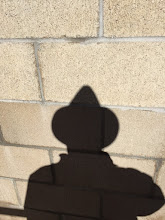The Past is always Past, and the present is Nearly So 2.23.2024
There are few historical persons so well documented as Jesus. Few ancient events are as tellingly narrated as His crucifixion. There is no other global movement anchored in such tragic and violent adversity whose history has been more formative and story more powerfully told. None of which matters if in our time we cannot interpret the Biblical story accurately, compellingly, and connectedly. The key to connection is largely determined by whether and how we integrate the Biblical witness into other historiographical story forms.
We are always looking in one direction or another. Backward, forward, to either side, up, or down. Our historical gaze reminds us that the past is past. It cannot be repeated. The present is upon us, but the future beckons, and soon the present will be past.
A hermeneutic of history recognizes that historical causality and contingency are always present. Our understanding is evolving, and the ultimate test is in our capacity to tell the tales that form us in a way that resonates in the human heart and recreates the human spirit.
There is a tension in the New Testament that is evident in all subsequent Early Christian literature. In the resurrection of Jesus, promises of eternal life have become personified. The concept of renewed life was so difficult to grasp that many religious cultures chose instead some kind of continuum of rebirth. The story of Jesus’ resurrection; a past event empowering our present and future, has been the defining characteristic of our storytelling ever since. J.R.R. Tolkien was fond of saying something to the effect that after Easter, humans will not tolerate stories without a happy ending. We embrace the present as the place where the storied past meets and molds the anticipated future. The words “Jesus is alive!” bookend the reality described by our story.
The past is always past. But it still has impact. The future is still to come. The present was once awaited with expectation, and it will soon be the past. History is filled with beauty and diversity as well as a bland, indistinguishable ugliness. And it cannot be fixed. Only narrated. The task of a hermeneutic of History is to tell as accurately and as powerfully as we can stories that can change the world. The most impactful stories are those which are true. The past is past. We make it present through this process of storytelling.
This is why the constellation of Biblical, Historical, and Theological truth must be in alignment. Sadly, in the contemporary Church, this is often not the case. When Biblical, Theological, and Historical understanding is compromised, we risk detaching our tale-telling from the historic and ongoing storytelling of the ancient faith. There are many threats to our faithful narration of our story.
Entertainment for example. Contemporary American pulpits are not exactly filled with stories of surrender, sacrifice, and service. They should be. That was the defining message of Jesus. These touchstones have not fared all that well throughout history. And whereas there is no long-term precedent for a “theology of entertainment”, one certainly seems to be emerging around us.
Power is another example. Jesus was struggling with this misunderstanding of the Kingdom long before He even made it to the cross. Between the resurrection and ascension, questions about the relationship between discipleship and power still dominated discussions among the Apostles. The two millennia since have been a constant referendum on the possibility that His Kingdom built on love and submission, could work. The problem is not that the world doubts it. The problem is that the Church often behaves as if she doubts it.
We cannot recreate the past. And we shouldn’t want to. Each era has its own burden to bear its own ongoing negotiation with past and future seeking leverage over the present. This tangle may not seem to present itself or show the symptoms of being a hermeneutical problem, yet it is. What we make of the present is largely forged from the past and either helps or hinders the future. The past is always past, and the present is nearly so. What tale have you, what tale are you, what tale will you tell?


0 Comments:
Post a Comment
Subscribe to Post Comments [Atom]
<< Home